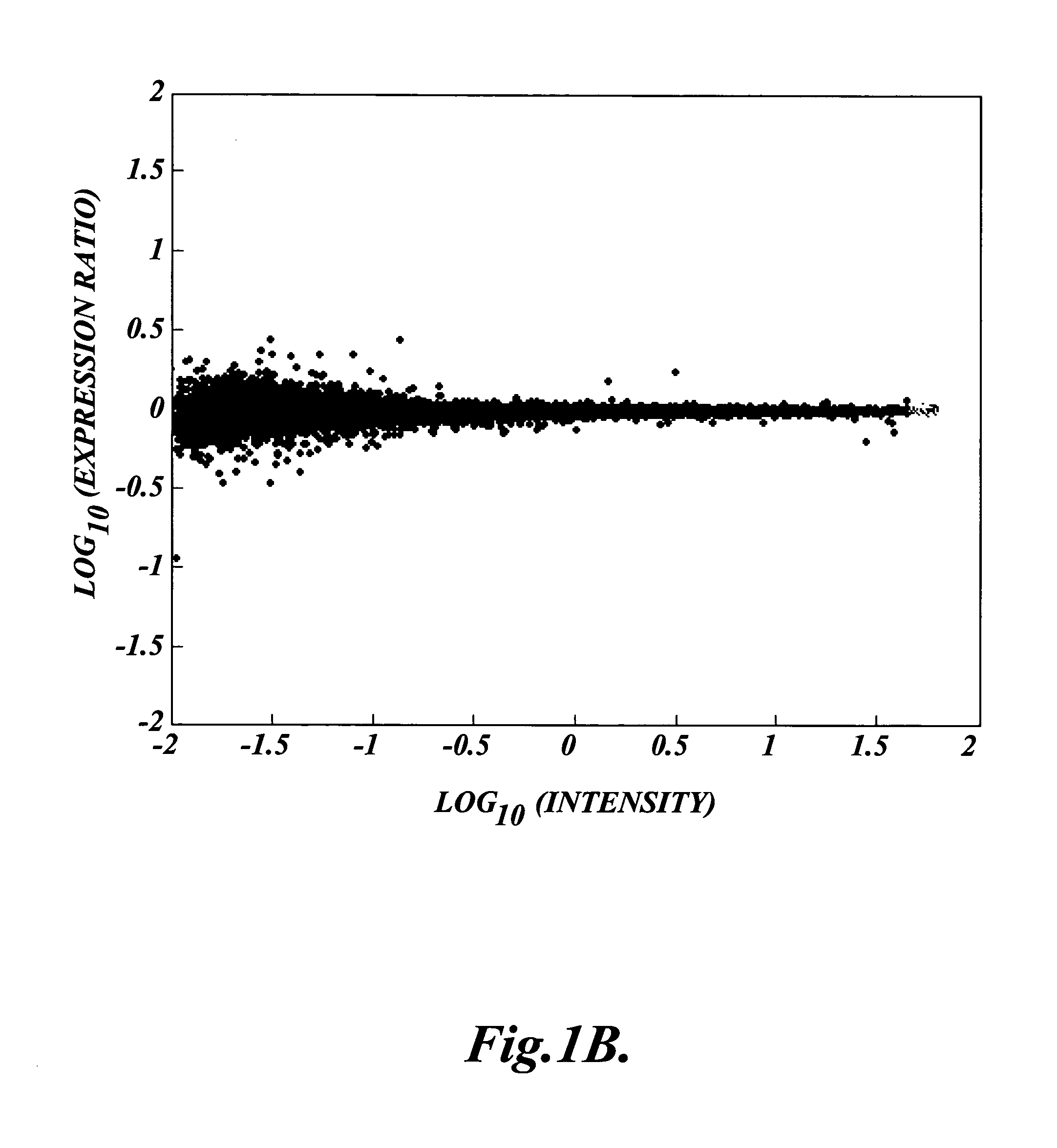Methods for recycling mRNA for linear cRNA amplification
a technology of mrna and linear crna, which is applied in the field of methods for preparing nucleic acid molecules from rna template molecules, can solve the problems of limited application of these protocols
- Summary
- Abstract
- Description
- Claims
- Application Information
AI Technical Summary
Benefits of technology
Problems solved by technology
Method used
Image
Examples
example 1
[0076]This Example describes a comparison of microarray analyses results obtained using cRNA targets obtained using an exemplary linear amplification method of the invention (Recycling RT) and cRNA targets obtained using a standard RT protocol (Standard RT).
[0077]Two common samples were independently amplified in parallel using either the standard RT protocol or an exemplary method of the invention (Recycling RT). The standard RT protocol used was as described in Hughes et al. (2001) Nat. Biotechnology 19:342–34 (see also U.S. Pat. No. 6,132,997), with either 2 micrograms or 5 micrograms input total RNA. The Recycling RT protocol was as described below, using 2 micrograms input total RNA and two rounds of RT.
1. Synthesis of First Antisense cDNA Molecules.
[0078]Two micrograms of suitably prepared total RNA and 20 pmoles of T7T18VN primer were dehydrated in a 96 well half skirt plate. The sample plate was then resuspended in 10 microliters of RNase-free water for 15 minutes at room te...
example 2
[0086]This Example describes the yield of cRNA from input total RNA from various tissues using an exemplary method of the invention (Recycling RT) for linearly amplifying cRNA.
[0087]The Recycling RT protocol was as described in EXAMPLE 1, using 2 micrograms input total RNA and two rounds of RT. Table 2 shows the yield of amino-allyl-cRNA from 2 micrograms of input total RNA from brain, heart, testis, thymus, uterus, and spleen.
[0088]
TABLE 2Yield of amino-allyl-cRNA using Recycling RTAmino-allyl-cRNAStandardTissueYield (micrograms)DeviationCV (%)Brain32.350.662.03Heart19.651.196.06Testis29.110.170.58Thymus23.740.512.13Uterus26.701.084.06Spleen22.270.030.13
PUM
| Property | Measurement | Unit |
|---|---|---|
| Temperature | aaaaa | aaaaa |
| Temperature | aaaaa | aaaaa |
| Temperature | aaaaa | aaaaa |
Abstract
Description
Claims
Application Information
 Login to View More
Login to View More - R&D
- Intellectual Property
- Life Sciences
- Materials
- Tech Scout
- Unparalleled Data Quality
- Higher Quality Content
- 60% Fewer Hallucinations
Browse by: Latest US Patents, China's latest patents, Technical Efficacy Thesaurus, Application Domain, Technology Topic, Popular Technical Reports.
© 2025 PatSnap. All rights reserved.Legal|Privacy policy|Modern Slavery Act Transparency Statement|Sitemap|About US| Contact US: help@patsnap.com


